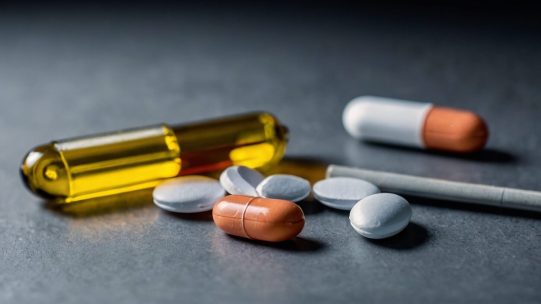Propecia or Proscar may lowering cholesterol and cutting the overall risk of cardiovascular disease

Finasteride, also known as Propecia or Proscar, treats male pattern baldness and prostate enlargement in millions of men worldwide. But a new study from the University of Illinois at Urbana-Champaign shows that finasteride may also have surprising life-saving effects, lowering cholesterol and reducing the overall risk of cardiovascular disease.
The study, published in the Journal of Lipid Research, found a significant correlation between finasteride use and lower cholesterol levels in men who participated in the National Health and Nutrition Examination Survey between 2009 and 2016 The study found a significant correlation between finasteride use and lower cholesterol levels in men participating in the National Health and Nutrition Examination Survey between 2009 and 2016. In mice taking high doses of finasteride, researchers found lower plasma total cholesterol, delayed progression of atherosclerosis, lower inflammation in the liver, and associated benefits.
Cholesterol levels in men taking finasteride were on average 30 points lower than in men not taking finasteride. I expected to see the opposite pattern, so it was very interesting,” said Assistant Professor Jaume Amengual, principal investigator of the study.
While the findings were exciting, they also had limitations. Of the nearly 4,800 survey respondents who met the general health criteria for inclusion in the analysis, only 155 (all men over 50) reported using finasteride. And the researchers were unable to determine how much or how long the surveyed men had taken finasteride.
This was not a clinical study where everything was perfectly controlled,” Amengual said. ‘ said Amengual. ‘We had to see what would happen in mice.
But first, why would hair loss and prostate medications affect cholesterol? Amengual studies atherosclerosis. Atherosclerosis is a disease in which cholesterol plaques clog arteries and cause cardiovascular diseases such as strokes and heart attacks. Because the disease is far more common in men than in premenopausal women, scientists have long suspected that the sex hormone testosterone is important in atherosclerosis, but its role is not entirely clear.
Finasteride works by blocking a protein found in hair follicles and the prostate that activates testosterone. The common denominator of testosterone was enough to pique Amengual’s interest.
He says, “One day I was reading about this drug and began to realize that there wasn’t much long-term research on the effects of this drug, so I decided to see if I could find a way to get a better understanding of its effects. Initially, it was just my own curiosity based on the fact that hormone levels are known to affect atherosclerosis, hair loss, and prostate problems,” he says. So I decided to investigate.”
After demonstrating the first ever, albeit observational, association between finasteride and lower cholesterol in men, Amengual asked his doctoral student, Donald Molina-Sherbes, to see if the pattern held true in mice.
Molina-Sherbes conducted an experiment in which male mice, genetically prone to atherosclerosis, were given four different doses of finasteride: 0, 10, 100, and 1000 milligrams per kilogram of food.
The mice consumed this drug for 12 weeks along with a high-fat, high-cholesterol “Western” diet. After the experiment, Molina-Sherbes analyzed the mice’s cholesterol and other lipid levels for evidence of atherosclerotic plaques. She also examined gene expression in the liver, studied bile acid metabolism, and analyzed steroids, triglycerides, and immune activity.
Mice treated with high doses of finasteride had lower cholesterol levels in their plasma as well as in their arteries. ‘Liver lipid and inflammatory markers were also lower.
This effect was only noticeable at the highest dose, which is a ridiculous level for humans, he explains, noting that mice metabolize finasteride differently than humans.
‘Finasteride metabolism is different in mice than in humans. But we use mice as models, and mice are extremely resilient to things that would kill any of us. ‘When you think about it that way, it’s not so crazy.
Humans take either 1 milligram or 5 milligrams of finasteride daily for hair loss and prostate enlargement, respectively. The fact that a clear pattern was seen in a study of men who appeared to be taking either of these doses suggests that the drug may lower cholesterol, even without large doses like those tested in mice.
The next step is for physicians to begin tracking the cholesterol of finasteride patients or conduct clinical trials to test its effectiveness. Understanding how finasteride affects transgender people is especially important.
Over the past decade, physicians have begun prescribing the drug to people transitioning from male to female or female to male. In both cases, hormonal changes can trigger hair loss. ‘Interestingly, transgender people are also at higher risk for cardiovascular disease. So this drug may have a preventive effect on cardiovascular disease not only in cis men, but also in transgender people.
Finally, like all medications, finasteride is not without risks. For more information, consult your doctor.










Comment